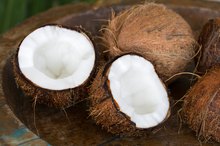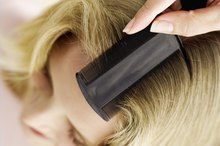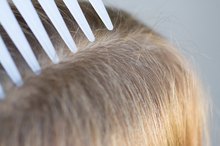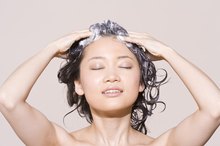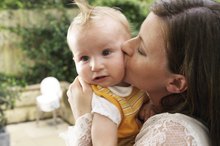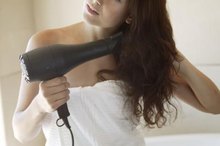What does fact checked mean?
At Healthfully, we strive to deliver objective content that is accurate and up-to-date. Our team periodically reviews articles in order to ensure content quality. The sources cited below consist of evidence from peer-reviewed journals, prominent medical organizations, academic associations, and government data.
- Parasitology Research: Activity of Tea Tree Oil and Nerolidol Alone or In Combination Against Pediculus capitis (head lice) and Its Eggs
- Parasitology Research: Activity of Tea Tree Oil and Nerolidol Alone or In Combination Against Pediculus capitis (head lice) and Its Eggs
The information contained on this site is for informational purposes only, and should not be used as a substitute for the advice of a professional health care provider. Please check with the appropriate physician regarding health questions and concerns. Although we strive to deliver accurate and up-to-date information, no guarantee to that effect is made.
Lice and Dreadlocks
Head lice can wreak havoc on your dreadlocks. Because dreads are long tubes of tightly knotted hair, combing them with a fine-toothed lice comb to remove nits is not possible. DreadheadHQ.com reports a range of home remedies submitted by clients, including rubbing alcohol, peroxide, shaving cream and cayenne pepper.
Lowdown on Lice
Lice are very small parasitic insects that live in human hair and feed on blood from the scalp. According to KidsHealth.org, it is more common to see the nits, or eggs, of lice than the bugs themselves. Nits lay close to the scalp and look similar to dandruff. Nits hatch into lice within one to two weeks. Scratching lice bites can lead to a bacterial infection, which a physician must treat with antibiotics. Children are more susceptible to head lice than adults.
- Lice are very small parasitic insects that live in human hair and feed on blood from the scalp.
- According to KidsHealth.org, it is more common to see the nits, or eggs, of lice than the bugs themselves.
Lice in Dreadlocks
Coconut Oil and Head Lice
Learn More
The most common treatment for lice is washing with a shampoo containing chemical pesticides and combing out the nits 5. Not only is combing impossible with dreadlocks, the pesticides in commercial lice shampoos can become trapped inside the locks. Trinidadian hairstylist Patricia Neptune says she treats lice in dreadlocks with heat, using deep steaming and infrared heat lamps. However, Darlene Miller of Lice911, a lice treatment service in Canada, says she has screened a handful of people with dreadlocks for lice over the years and none have actually had them 15. Lice infestation in dreadlocks may actually be quite rare.
Home Remedies
There are many anecdotal reports of successful home treatment of head lice in dreadlocks 15. Methods include dousing the hair with Listerine, petroleum jelly, coconut oil and hydrogen peroxide and covering the hair with a shower cap for 15 minutes to one week. One treatment that is mentioned often is soaking locks in vinegar. Essential oils may also do the trick, with tea tree oil, eucalyptus, marjoram, rosemary, lavender and peppermint being mentioned often.
- There are many anecdotal reports of successful home treatment of head lice in dreadlocks 1.
- Methods include dousing the hair with Listerine, petroleum jelly, coconut oil and hydrogen peroxide and covering the hair with a shower cap for 15 minutes to one week.
Delacet Herbal Solution
How to Treat Head Lice With Cetaphil
Learn More
One remedy recommended by beauty and health writers and editors is an herbal lice treatment called Delacet 45. This product has been manufactured for more than 40 years and is recommended for dreadlocks and African hair. The ingredients are tincture of larkspur and acetic acid, or vinegar. Pouring Delacet over the hair and soaking for two to three hours before washing with dreadlock shampoo may eliminate lice 5. There is no need to use a nit comb with Delacet.
Preventing Lice
The best way to prevent lice is to refrain from sharing items that come into contact with the hair, such as hairbrushes, combs and pillowcases. If you or someone in your family contract lice, washing all the items with which the infested head has come into contact in hot water and bleach can help to kill the bugs and nits.
Related Articles
References
- My Dreadlocks: Head Louse Treatment Options for Dreadlocks
- Dreadhead HQ: Bugs Dreadlocks
- Knotty Boy: Tips for Immediate Dreadlock After-Care
- Kids Health: Head Lice
- Parasitology Research: Activity of Tea Tree Oil and Nerolidol Alone or In Combination Against Pediculus capitis (head lice) and Its Eggs
- Meister L, Ochsendorf F. Head Lice: Epidemiology, Biology, Diagnosis, and Treatment. Deutsches Ärzteblatt International. 2016;113(45):763-772. doi:10.3238/arztebl.2016.0763
- Centers for Disease Control and Prevention. Head Lice: Frequently Asked Questions (FAQs). Updated July 17, 2019.
- Devore CD, Schutze GE. Head Lice. Pediatrics. 2015;135(5). doi:10.1542/peds.2015-0746
- Barker SC, Altman PM. A Randomised, Assessor Blind, Parallel Group Comparative Efficacy Trial of Three Products for the Treatment of Head Lice in Children--Melaleuca Oil and Lavender Oil, Pyrethrins and Piperonyl Butoxide, and a "Suffocation" Product. BMC Dermatol. 2010 Aug 20;10:6. doi:10.1186/1471-5945-10-6
- Abdel-Ghaffar F, Al-Quraishy S, Al-Rasheid KA, Mehlhorn H. Efficacy of a Single Treatment of Head Lice With a Neem Seed Extract: An in Vivo and in Vitro Study on Nits and Motile Stages. Parasitol Res. Published June 11, 2011. doi:10.1007/s00436-011-2484-3
Writer Bio
Ann Jones has been writing since 1998. Her short stories have been published in several anthologies. Her journalistic work can be found in major magazines and newspapers. She has a Master of Fine Arts in creative writing.
